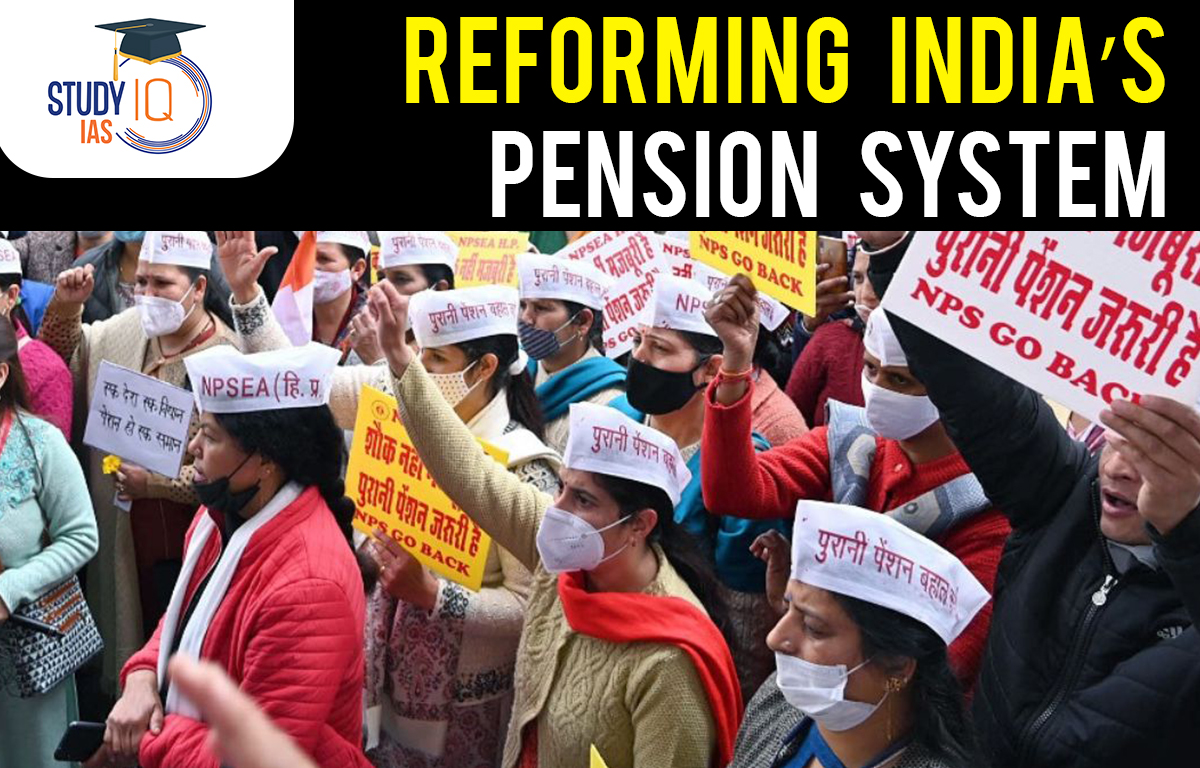Table of Contents
Reforming India Pension System Latest News
To Reforming India Pension System, The State governments of Rajasthan, Chhattisgarh, Punjab and Jharkhand have informed the Central government/Pension Fund Regulatory and Development Authority (PFRDA) about their decision to restart old pension scheme (OPS) for their state government employees.
Return to Old Pension Scheme has been labeled as both bad economics as well as bad politics.
Increasing Pension Bill: According to the World Economic Forum, “For the first time in human history, people aged 65 and over outnumber children aged five or younger”.
Longevity Risk: India has a relatively younger population profile, thus there is a longevity risk.
- Longevity risk is where rising life expectancy could result in pension and insurance companies needing more cash because people are living for longer than anticipated.
India Pension System Globally
According to Mercer CFA Institute Global Pension Index, in 2022 edition, India’s pension system ranks at 41 out of the 44 countries. Index ranks countries on three criteria:
- Adequacy: What benefits are future retirees likely to receive?
- Sustainability: Can the existing systems continue to deliver, notwithstanding the demographic and financial challenges?
- Integrity: Are the private pension plans regulated in a manner that encourages long-term community confidence?
Pension regime in India is nowhere near adequate, remotely sustainable and scores relatively low in integrity.
Read about: Expenditure on Pension
Issues with India Pension Architecture
Membership: At least 85 per cent current workers are not members of any pension scheme, and in their old age likely to remain uncovered or draw only social pension
Pension support: Of all elderly, 57 per cent receive no income support from public expenditure, and 26 per cent collect social pension as part of poverty alleviation
System expenses: 11.4 per cent of the elderly draw defined benefit as government ex-workers (or their survivors), cornering 62 per cent of system expense
- The system for old age income support entailed 11.5 per cent of public expenditure, and sub-national governments bear more than 60 per cent
Interest payments: Contributory program funds invested in government paper soak up 40 per cent of all interest payment of sub-national governments.
Way Forward
India’s pensions system is in a dire need of a reform and that doing so will be both good politics and good economics.
World Bank provided a Pension Conceptual Framework in 2008:
- Zero pillar: A non-contributory basic pension from public finances to deal explicitly with the poverty-alleviation objective.
- First pillar: A mandated public pension plan with contributions linked to earnings, with the objective of replacing some pre-retirement income.
- Second pillar: Typically, mandated defined contribution (DC) with individual accounts in occupational or personal pension plans with financial assets.
- Third pillar: Voluntary and fully funded occupational or personal pension plans with financial assets that can provide some flexibility when compared to mandatory schemes.
- Fourth pillar: A voluntary system outside the pension system with access to a range of financial and non-financial assets and informal support such as family, healthcare and housing.


 Daily Quiz 03 July 2025
Daily Quiz 03 July 2025
 Dalai Lama Confirms He will have a Succe...
Dalai Lama Confirms He will have a Succe...
 List of Awards and Honours Received by N...
List of Awards and Honours Received by N...





















